A Comprehensive Guide to Baegundae Summit Hike
Nestled in the heart of Seoul, Bukhansan National Park (북한산국립공원) is a true haven for nature lovers and hiking enthusiasts. Spanning 79.9 square kilometers, it’s celebrated for its dramatic granite peaks, lush forests, and centuries-old cultural heritage. The park’s crowning glory is Baegundae Summit Hike (백운대), soaring to a height of 836.5 meters (2,744 feet), making it the highest summit in the Bukhansan mountain park.
I first came to South Korea in 2015, and my journey into the world of Korean mountains began that same year with a winter hike to Baegundae Peak. It was my first-ever hiking experience in Korea, and the memory of conquering that icy trail is something I’ll never forget. Since then, I’ve revisited Bukhansan countless times, exploring its popular and hidden gems alike.

While Baegundae Summit Peak stands as the ultimate destination for most hikers, Bukhansan National Park offers a plethora of trails and peaks to explore. Popular peaks like Munsubong, Bibong, Mangyeongdae (799m), and Insubong (811m) captivate visitors with breathtaking views. But what makes Bukhansan special for me are its lesser-known peaks like Jokduribong (370m) and Hyangnobong (527m), which provide a serene escape from the crowds. Over the years, I’ve explored almost every trail and peak in this incredible park, experiencing its magic in all seasons.
Klook.comIf you’re visiting South Korea, make sure to add Bukhansan National Park to your itinerary. And if you’re up for an unforgettable adventure, don’t miss the chance to hike to Baegundae Peak. Standing atop the summit, you’ll be rewarded with a breathtaking view of raw Seoul—a panoramic landscape that perfectly blends nature and cityscape.
Whether you’re an experienced hiker or a first-timer, Baegundae Peak and Bukhansan National Park are destinations that will leave you inspired and longing for more.
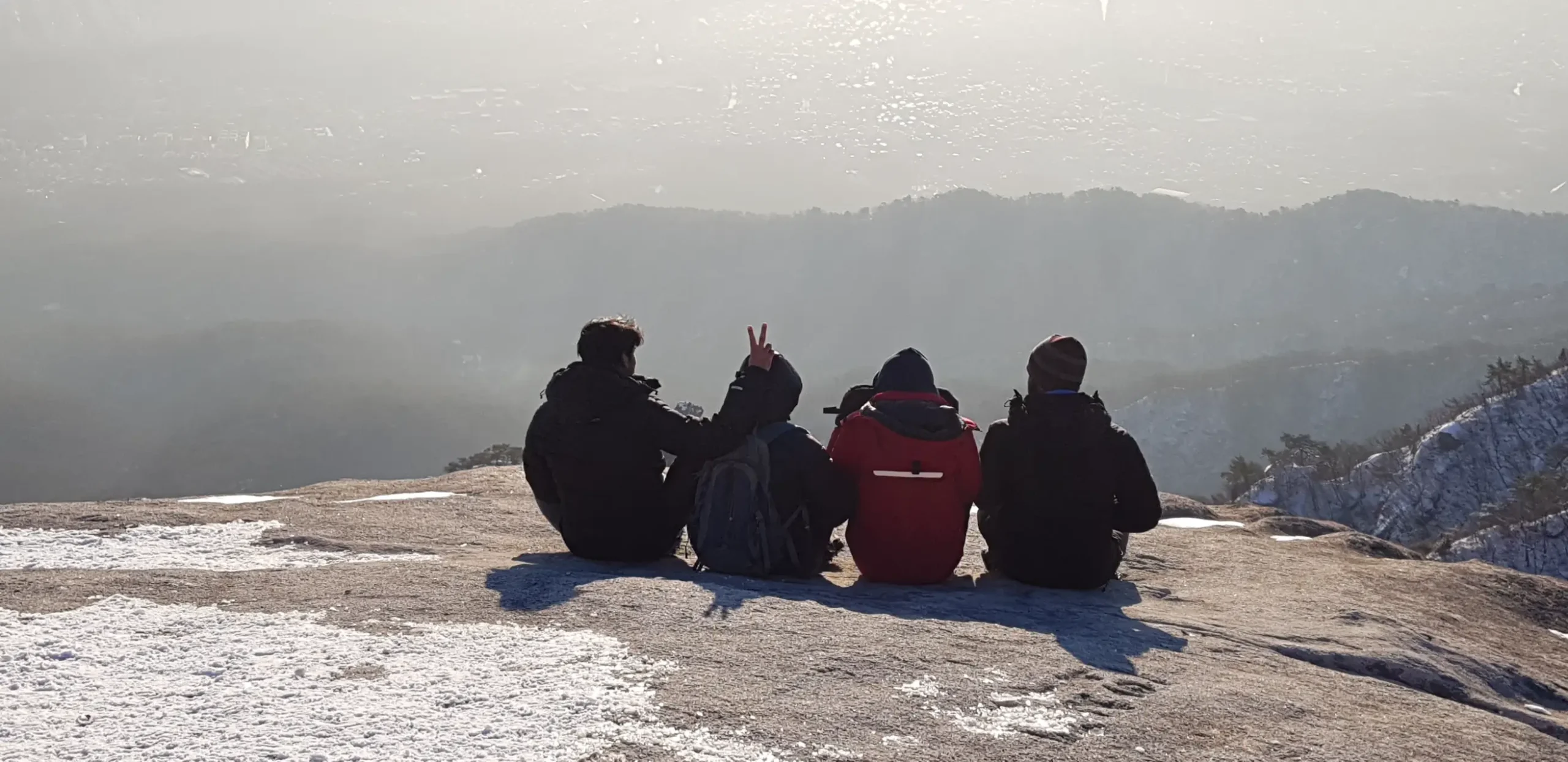
Why Should You Hike Bukhansan’s Baegundae Summit Peak?
Hiking to Baegundae Summit Peak is more than just a physical challenge; it’s an opportunity to witness breathtaking views of Seoul, experience the serenity of nature, and immerse yourself in Korean history and culture. The hike offers:
- Spectacular Views: From the Baegundae Summit Peak, you’ll enjoy panoramic views of the sprawling city of Seoul, juxtaposed with the tranquility of the surrounding mountains.
- Diverse Trails: Whether you’re a seasoned hiker or a beginner, there’s a trail to suit your experience level.
- Historical Landmarks: Along the way, you’ll encounter ancient fortresses and Buddhist temples, adding cultural depth to your journey.
Top Hiking Trails to Baegundae Peak
Several trails lead to Baegundae Summit Peak, each offering unique experiences. The most popular and widely used route to the summit of Bukhansan is the Bukhansanseong Trail (북한산성 탐방로). However, there are many other trails available for adventurers seeking to explore this stunning national park. Below are some of the most popular trail options to help you plan your hike:
If you’re interested in learning more about Bukhansan National Park, be sure to check out this detailed guide for further insights!
1. Bukhansanseong Trail (북한산성 탐방로)
- Overview: This is one of the most popular and accessible routes to Baegundae Peak. It passes through the historic Bukhansanseong Fortress, which dates back to the Joseon Dynasty.
- Route: Bukhansanseong Information Center → Bukhansanseong Fortress → Baegundae Summit Peak
- Time Needed: Approximately 6-8 hours (round trip)
- Starting Point: Bukhansanseong Information Center
- How to Go: Take Subway Line 3 to Gupabal Station (구파발역), Exit 1, and board Bus 704 to the Bukhansanseong Entrance.
Trail Details:
Start your hike at the Bukhansanseong Information Center, where you can gather maps and information. The trail begins with a gentle incline through a forested path, leading to the historic Bukhansanseong Fortress. This ancient stone wall, constructed for defense purposes, offers a glimpse into Korea’s past. After exploring the fortress, the trail becomes steeper as you ascend rocky sections and staircases. The final stretch requires some scrambling over granite boulders, but ropes and handrails are available for support.well in this route you will also encounter with another peak call bibong.
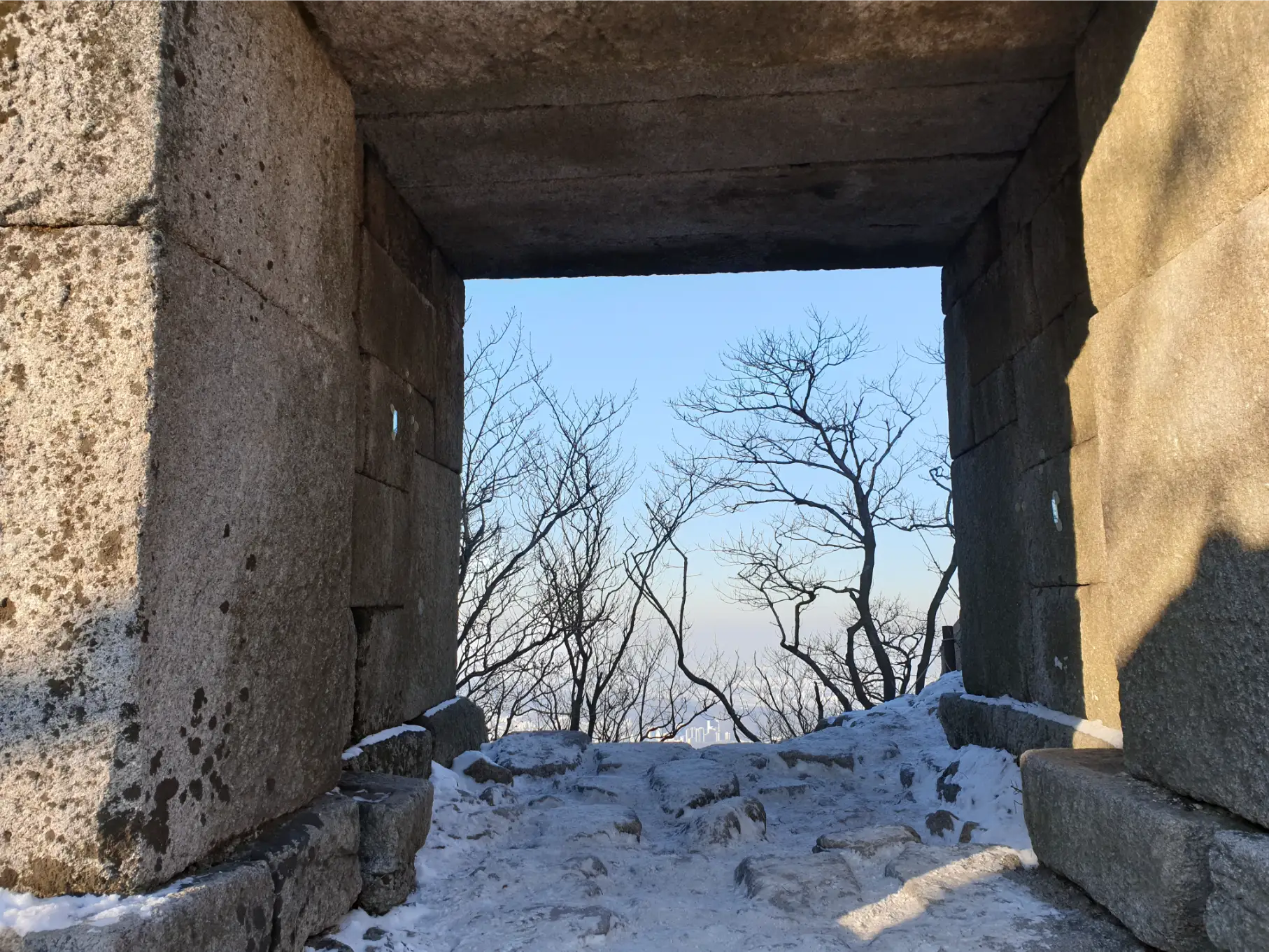
Landmark: Bukhansanseong Fortress: A centuries-old stone wall built to protect the capital. It’s a great spot to take a break and admire the views.
2. Daeseongmun Gate Trail (대성문 탐방로)
- Overview: This trail takes you through lush forests and past the impressive Daeseongmun Gate before reaching the summit.
- Route: Daeseongmun Entrance → Daeseongmun Gate → Baegundae Summit Peak
- Time Needed: Approximately 6-7 hours (round trip)
- Starting Point: Daeseongmun Entrance
- How to Go: Take Subway Line 4 to Suyu Station (수유역), Exit 3, and board Bus 120 to the Daeseongmun Entrance.
Trail Details:
The hike begins at Daeseongmun Entrance, with a moderate incline through a scenic forest. The trail is well-marked, and you’ll pass the majestic Daeseongmun Gate, an iconic landmark that once served as an entry point to the fortress. Beyond the gate, the trail becomes more rugged, with steep climbs and rocky paths leading to Baegundae Summit.
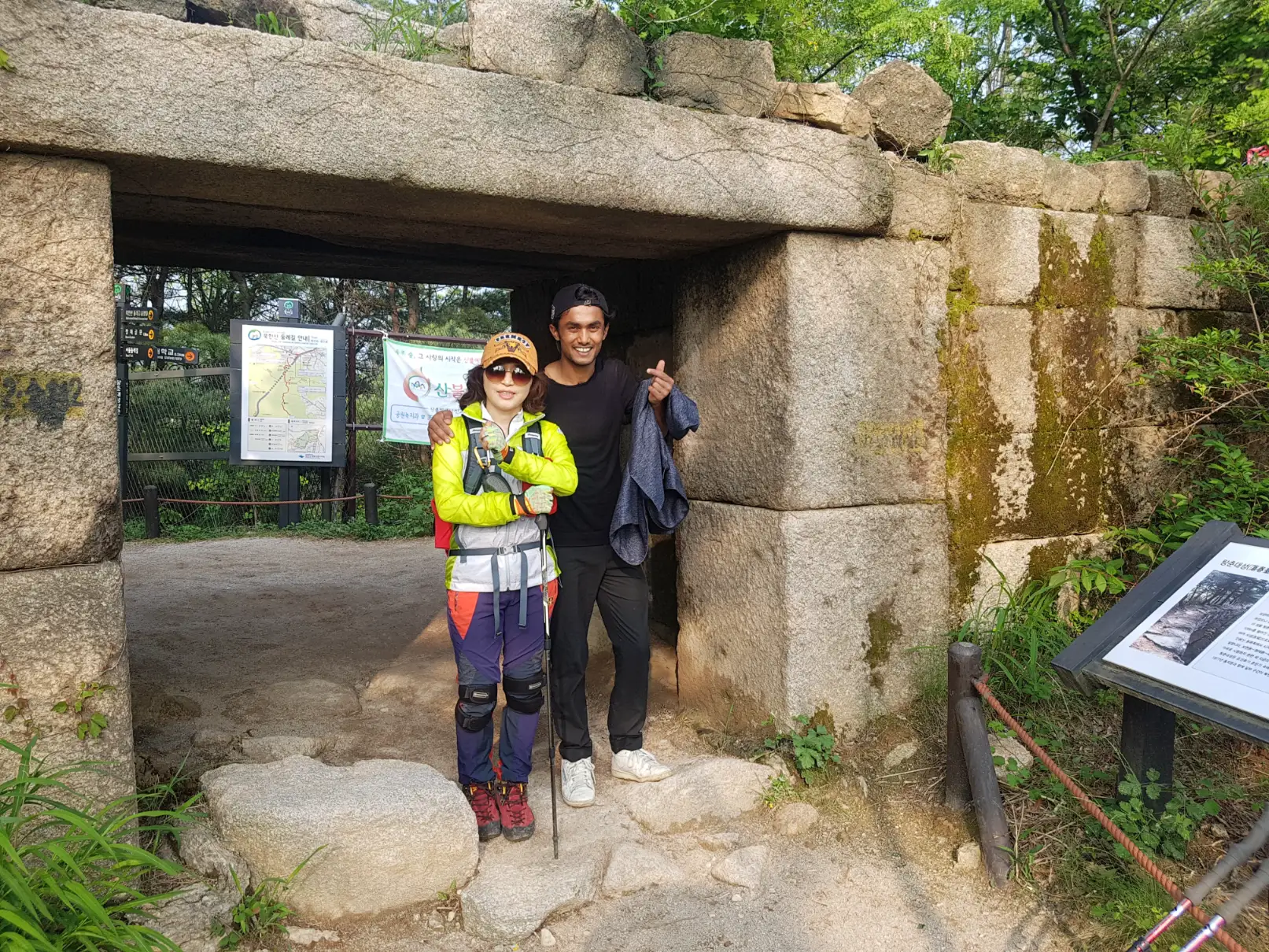
Landmark: Daeseongmun Gate: A beautifully preserved gate offering an excellent photo opportunity.
3. Gupabal Trail (구파발 탐방로)
- Overview: A quieter route that starts near Gupabal Station and offers a mix of forested trails and rocky ascents.
- Route: Gupabal Station → Ridge Trail → Baegundae Summit Peak
- Time Needed: Approximately 4-5 hours (round trip)
- Starting Point: Gupabal Station
- How to Go: Take Subway Line 3 to Gupabal Station, Exit 1.
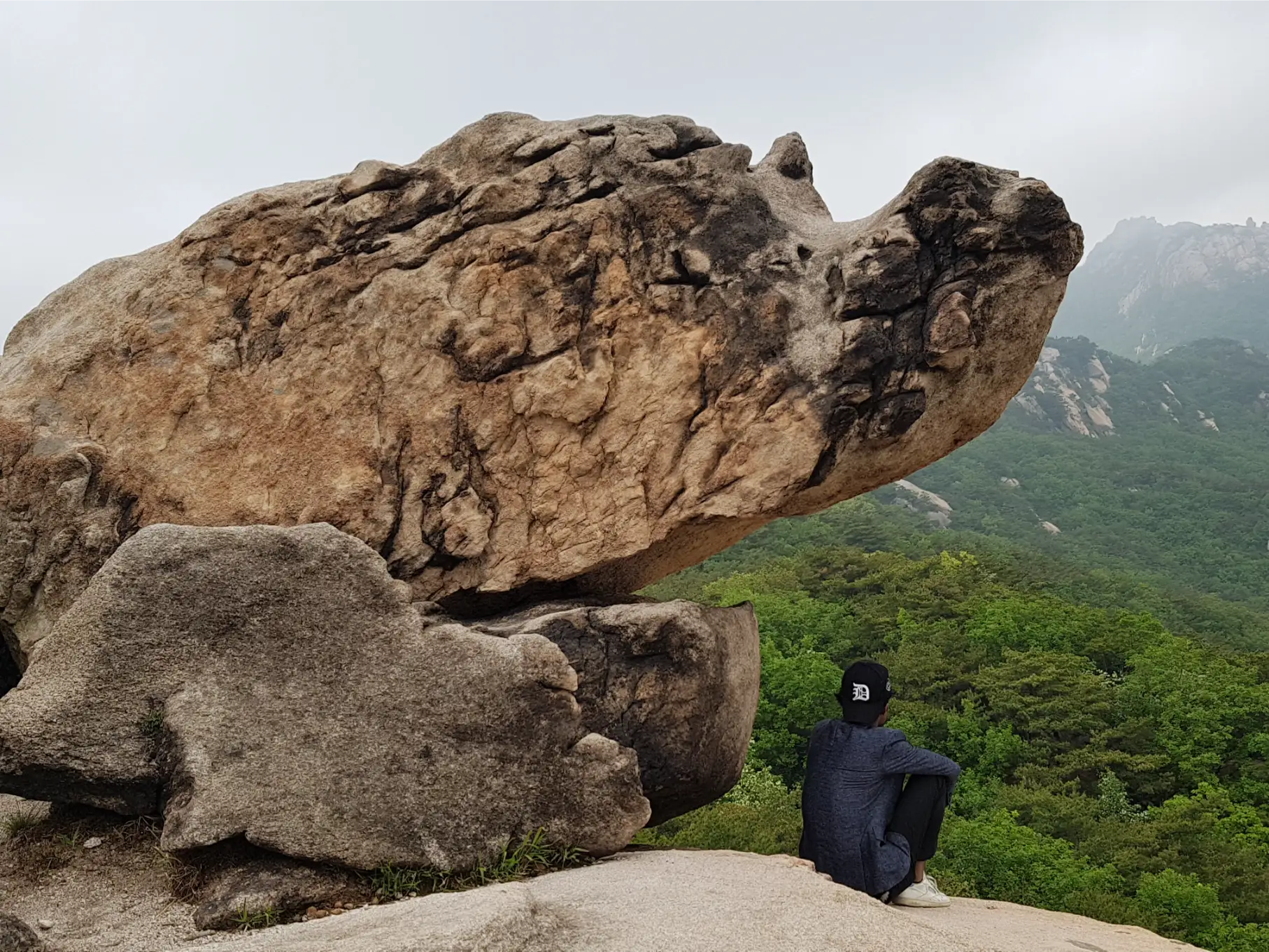
Trail Details:
Baegundae trail begins with a gradual ascent through wooded areas, eventually leading to the ridge that connects to Baegundae. The ridge offers stunning views of the surrounding valleys and peaks, making it a favorite for photographers. The final section involves scrambling over rocks, but the effort is rewarded with breathtaking vistas from the summit.
4. Bibong Ridge Trail (비봉 능선 탐방로)
- Overview The Bibong Ridge Trail offers a less crowded but equally scenic route to Baegundae Peak. This trail takes you along the picturesque Bibong Ridge, providing breathtaking views of nearby peaks and valleys.
- Route: Bibong Information Center → Bibong Peak (비봉봉) → Baegundae Summit Peak
- Time Needed: Approximately 5-6 hours (round trip)
- Starting Point: Bibong Information Center
- How to Go: Take Subway Line 4 to Suyu Station (수유역), Exit 3, and board Bus 34 to Bibong Entrance.
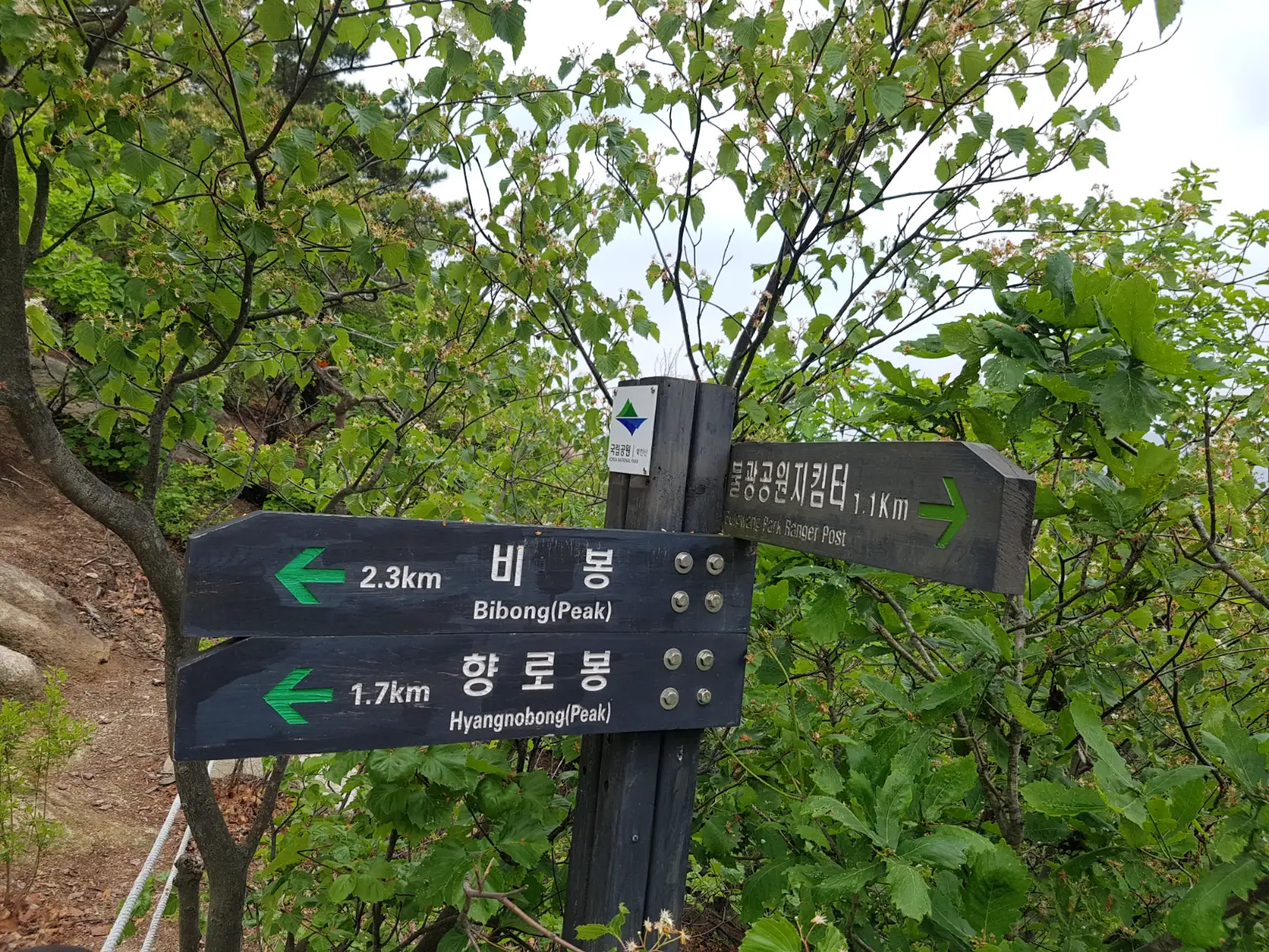
The Best Hiking Trails to Reach Baegundae Summit Peak
The hike to Baegundae Peak via the Bukhansanseong Trail begins at the Bukhansanseong Information Center, a well-marked and organized starting point. Here, you can prepare for your hike by grabbing maps, refilling your water, and soaking in the excitement of the journey ahead. As you step onto the trail, you’re immediately welcomed by a gentle incline that winds through a lush, forested path. The tall trees and the sound of rustling leaves create a serene and refreshing atmosphere, making the first leg of the hike feel peaceful and energizing.
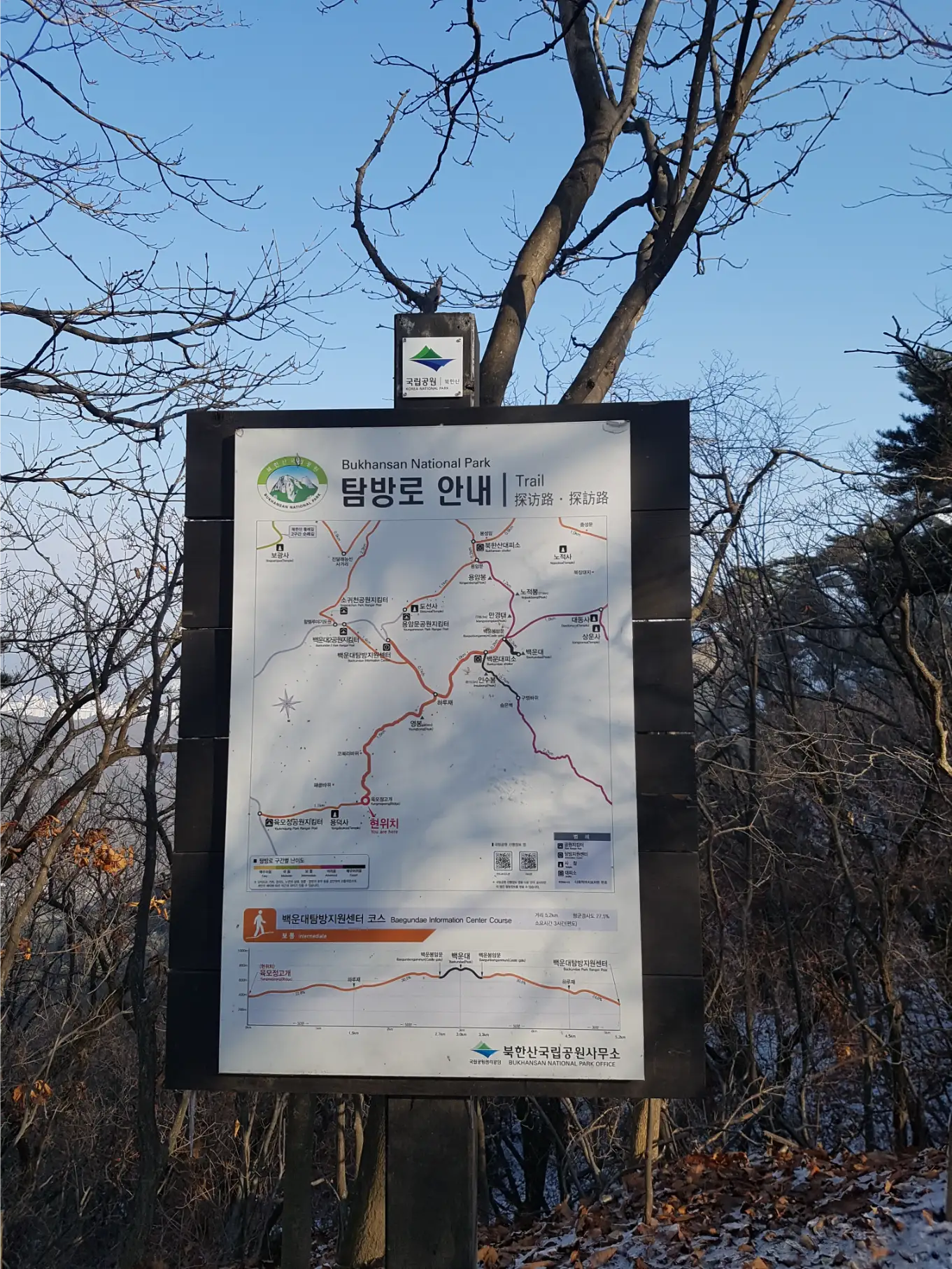
Scenic Forest Path and the First Rest Stop
About 20–30 minutes into your hike, the incline gradually increases. This section of the trail remains shaded by trees, offering a cool reprieve even on warmer days. You’ll come across your first rest stop: a small wooden platform with benches. Take a moment to hydrate and enjoy the forest views around you. From here, the trail offers a sense of calm that prepares you for the exciting landmarks ahead.
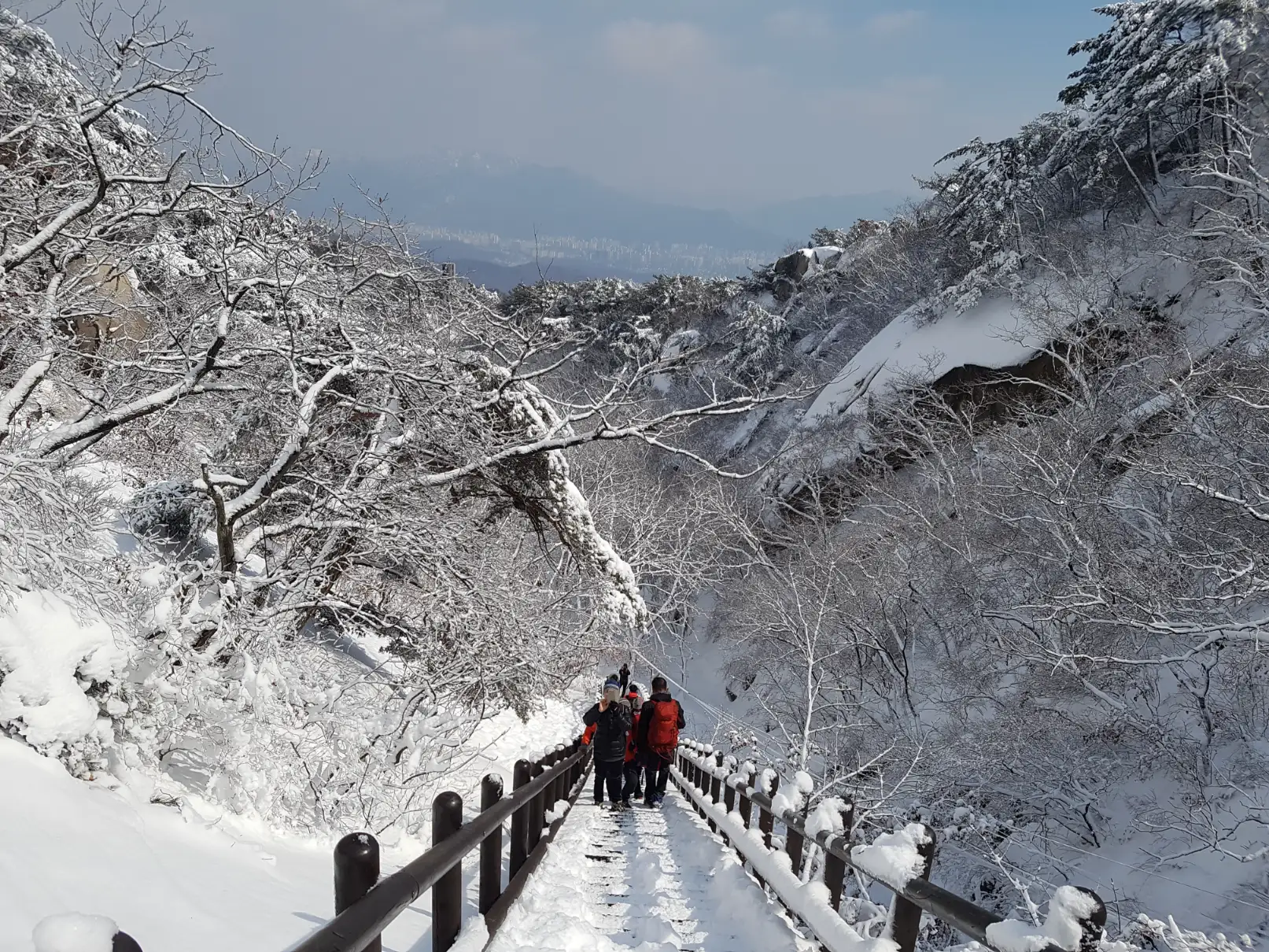
Encountering History: Bukhansanseong Fortress Wall
Continuing along the trail, you’ll soon reach the Bukhansanseong Fortress Wall, a fascinating historical feature of this hike. This ancient stone wall, built during the Joseon Dynasty, stretches across the mountainside, standing as a testament to Korea’s rich history and architectural ingenuity. Walking alongside the fortress wall, you can imagine the soldiers who once patrolled these paths, guarding the capital below. The fortress adds a unique cultural dimension to the hike, making it more than just a physical challenge.
Daedongmun Gate: A Restful and Scenic Landmark
As the trail progresses, you’ll arrive at Daedongmun Gate (대동문), one of the most striking landmarks on this route. The gate is part of the ancient defensive structure, and its intricate design and towering presence make it a perfect spot for a photo break. Many hikers pause here to catch their breath, enjoy the surrounding scenery, and reflect on the historical significance of this gate. Beyond Daedongmun, the trail becomes noticeably steeper, with rocky paths and a more challenging incline.
The Rugged Climb: Granite Rocks and Open Views
The trail now transitions into a more rugged section, with granite rocks dominating the landscape. This part of the hike requires careful footing and more effort, but it also offers some of the most stunning views. As the trees thin out, you’ll be rewarded with sweeping panoramas of the valleys and ridges of Bukhansan National Park. The contrast between the natural beauty and the urban sprawl of Seoul in the distance is striking. It’s a great opportunity to pause and take in the grandeur of your surroundings.
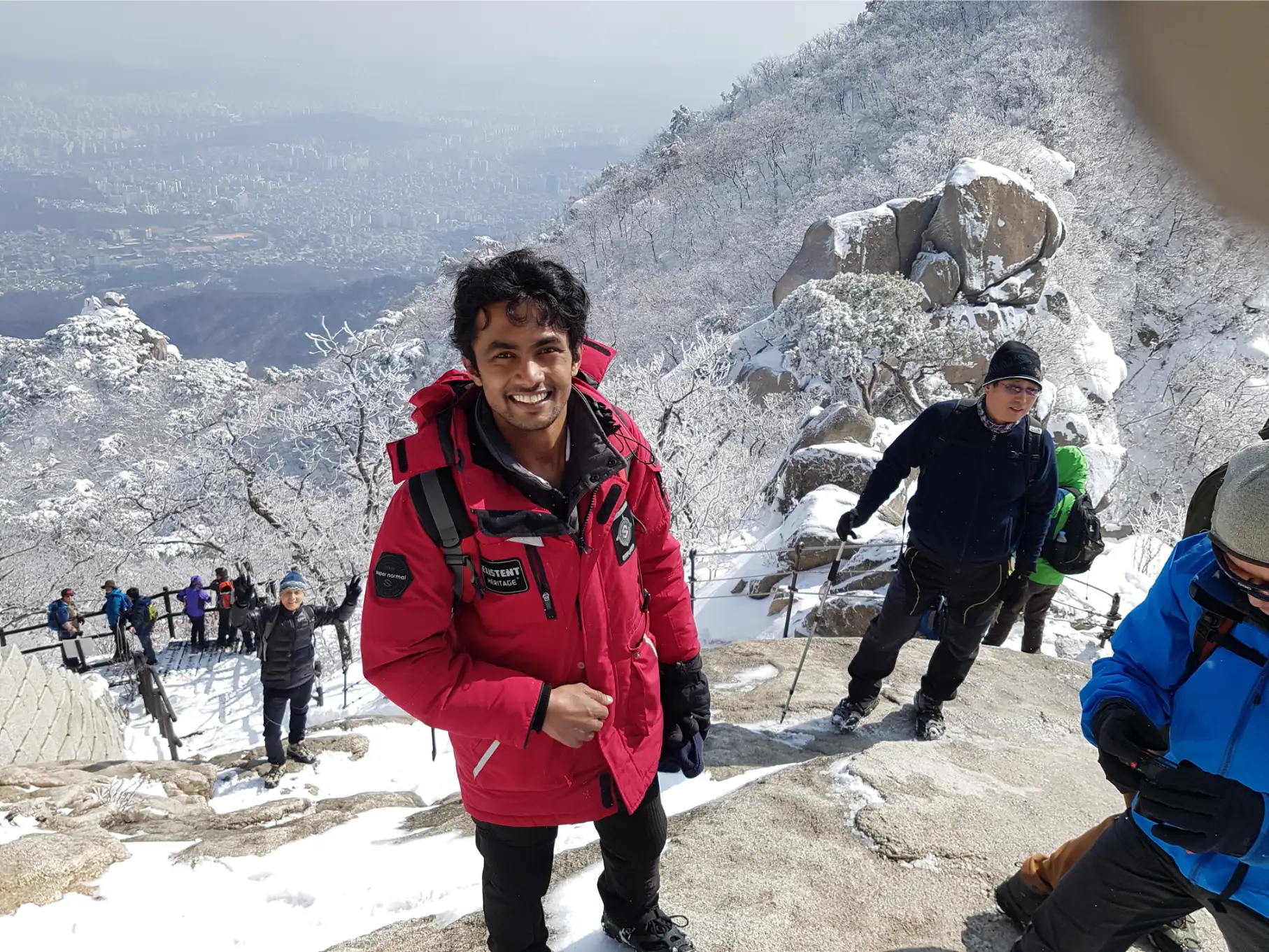
The Final Ascent to Baegundae Summit Peak
As you approach the final stretch, the trail becomes steeper and more challenging. Large boulders and granite outcrops dominate the path, requiring you to scramble in some sections. Thankfully, ropes and metal railings are installed to assist hikers, making this section manageable for most. Take your time here and ensure each step is secure, especially if the rocks are wet or slippery. The anticipation builds with each step, as you catch glimpses of the summit drawing closer.
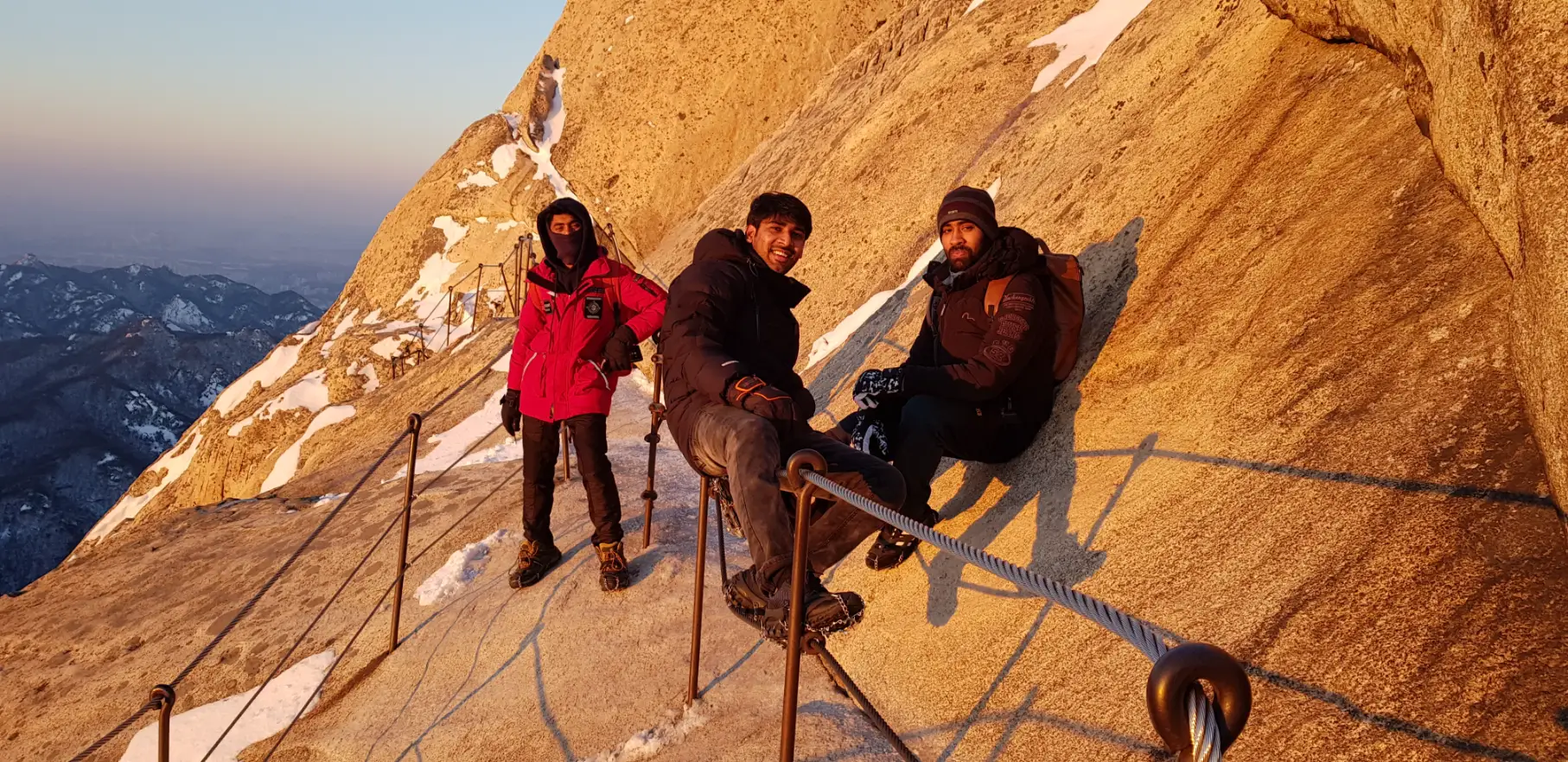
Finally, after conquering the last few steps, you’ll find yourself standing at the summit of Baegundae Summit Peak (백운대), the highest point of Bukhansan National Park at 836.5 meters. The 360-degree panoramic views from the top are nothing short of breathtaking. On clear days, you can see the Han River, the cityscape of Seoul, and the endless ridges of the surrounding mountains. It’s a moment of triumph and awe that makes all the effort worthwhile. Take time to relax on the granite boulders, enjoy a snack, and soak in the unparalleled beauty of the peak.
Getting Down from Baegundae Summit
After reaching the summit of Baegundae Summit , you can choose to descend using the Bukhansanseong Trail, retracing your steps back to the starting point. However, for a richer and more varied experience, I recommend taking the trail that crosses Munsubong Peak (문수봉). Many local hikers prefer this route to fully enjoy the expansive beauty of Bukhansan National Park.
This trail descends along a scenic ridge, offering stunning views and leading you to Munsubong Peak, standing at 724 meters. The path is well-maintained and takes about 3 hours to reach the Ui-dong (우이동) entrance, a different exit point. Along the way, you’ll enjoy serene forests, rocky outcrops, and a quieter atmosphere compared to Baegundae.
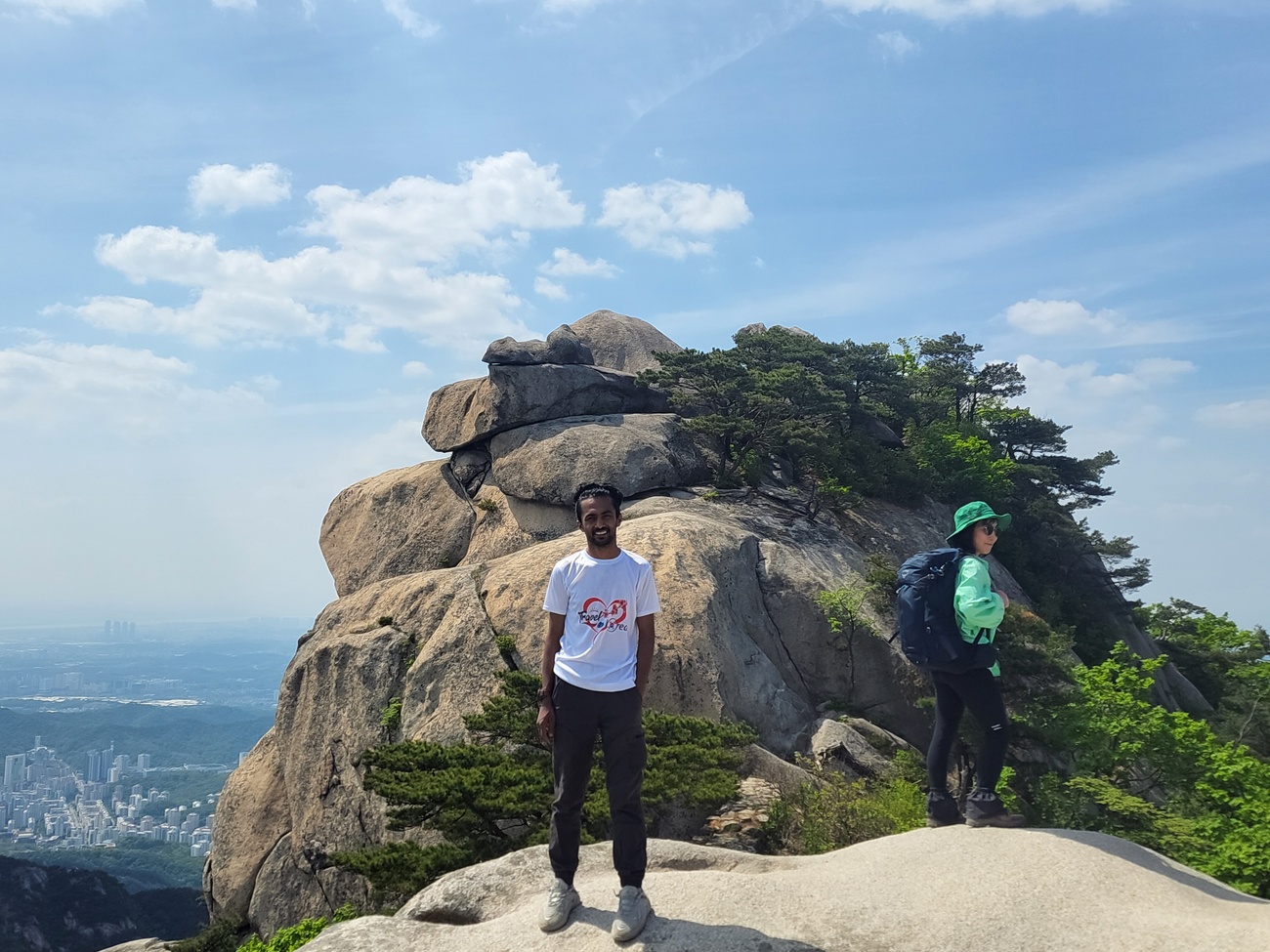
Crossing Munsubong Peak adds an extra highlight to your hike, with its unique rock formations and peaceful setting. From the exit, you can easily find public transportation and nearby cafes to relax and refuel. This alternative route not only enriches your adventure but also showcases more of Bukhansan National Park’s diverse landscapes, making it my favorite way to descend.
How to Go to Baegundae Summit Peak via Bukhansanseong Entrance
Getting to the starting point of the Bukhansanseong Trail is straightforward and convenient with public transportation. Here’s how to reach it:
- Take the Subway:
Start by taking Subway Line 3 to Gupabal Station (구파발역). Gupabal Station is well-connected and easy to find, as it’s a popular transit point for visitors heading to Bukhansan National Park. - Exit the Station:
Once you arrive at Gupabal Station, head to Exit 1. This exit is clearly marked and opens to the street where you’ll find bus stops nearby. - Board the Bus:
Look for Bus 704, which goes directly to the Bukhansanseong Entrance (북한산성 입구). The buses are frequent and well-marked with digital signs showing the route number, making it easy to identify. - Ride Duration:
The bus ride takes approximately 10–15 minutes, depending on traffic. Along the way, you’ll notice the scenery transition from urban streets to the lush, green foothills of Bukhansan. - Get Off at the Entrance:
The bus will stop at the Bukhansanseong Entrance, where you’ll find the information center, restrooms, and signage for the baegundae trail. This is your starting point for the hike.
For a smoother journey, consider using a T-money card or other transit card to pay for the subway and bus fares easily. Starting early in the morning is recommended to avoid crowds and enjoy a peaceful start to your hike.
What to Eat After Hiking Baegundae Summit Peak
After descending from Baegundae Summit, refueling with delicious food is a must. If you’re still in the park, the shelters along the trails offer simple yet comforting options. You can enjoy a warm bowl of ramyeon (라면), which is perfect for restoring energy after a strenuous hike. For something light and portable, try gimbap (김밥)—Korean rice rolls packed with vegetables and sometimes meat. Many local hikers also celebrate their hike with a refreshing cup of makgeolli (막걸리), a traditional rice wine, available at the park shelters.
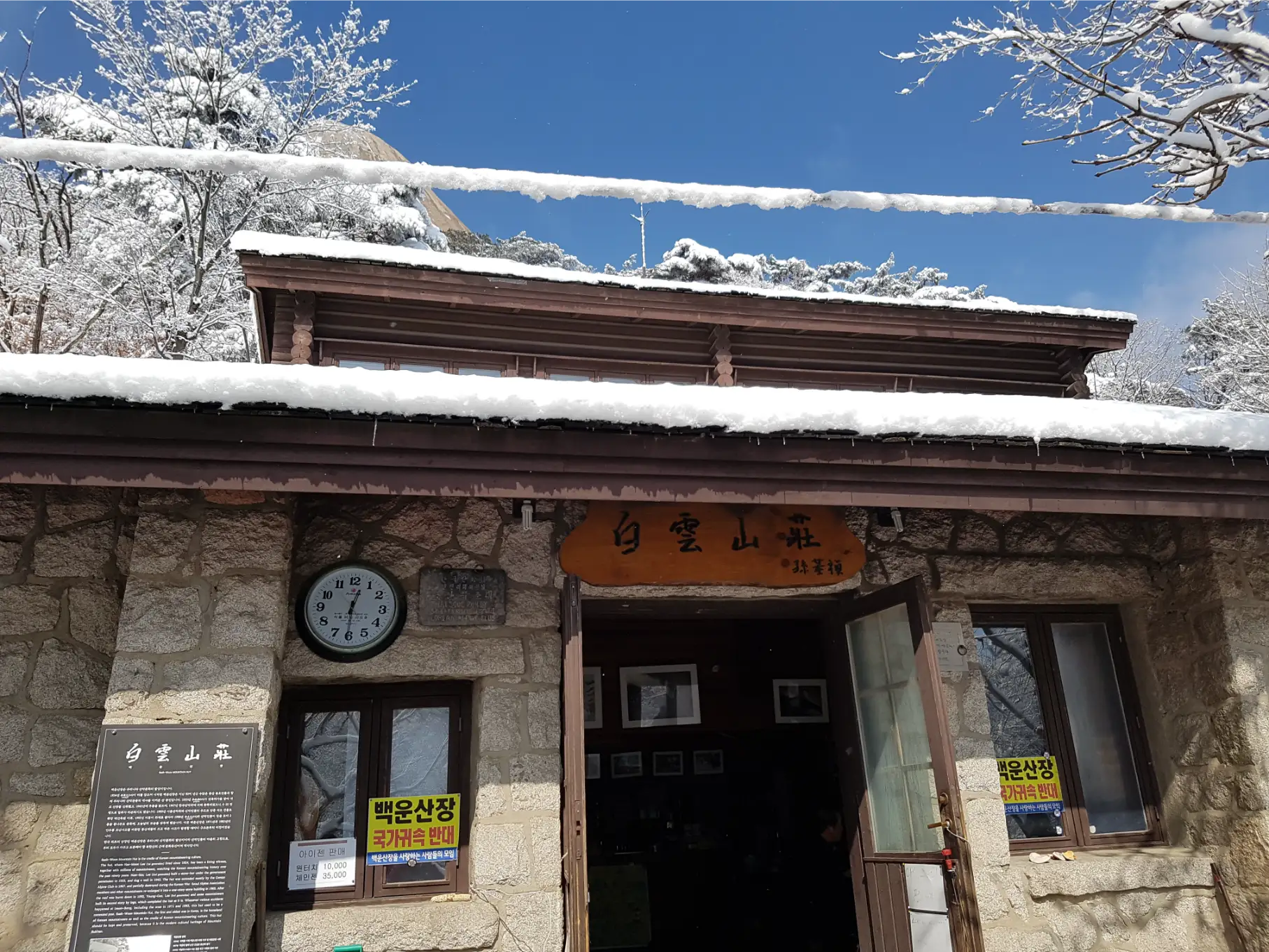
Outside the park, near the main entrances like Bukhansanseong or Ui-dong, you’ll find cozy restaurants serving hearty Korean dishes. Popular post-hike meals include samgyeopsal (grilled pork belly) or dakgalbi (spicy stir-fried chicken), both perfect for sharing with friends. Pair these with banchan (side dishes) and rice for a filling and satisfying end to your hiking adventure. Whether you eat at the shelter or a local restaurant, these meals will leave you refreshed and happy.
The Best Season to Hike Baegundae Peak: A Season-by-Season Guide
Hiking Baegundae Summit peak is a rewarding experience any time of the year, but each season offers unique challenges and beauty. Understanding what to expect during different times of the year will help you prepare and make the most of your adventure. Here’s a detailed guide to hiking in each season, along with tips to ensure a safe and enjoyable trip.
Spring (March to May): A Burst of Blossoms
Spring is one of the most popular seasons to hike Baegundae Peak. As the weather warms up, the mountains come alive with vibrant colors, from cherry blossoms to azaleas and other wildflowers. The temperatures are mild, ranging from 10°C to 20°C (50°F to 68°F), making it comfortable for most hikers.
What to Expect: Forest trails lined with blooming flowers and fresh greenery. Pleasant weather with cool mornings and evenings.
Tips for Hiking in Spring:
- Bring layers, as mornings and evenings can still be chilly.
- Pack sunscreen and sunglasses, as the sun can be strong on clear days.
- Watch for slippery paths if it rained recently, as spring showers are common.
Summer (June to August): Lush Greenery and Humidity
Summer transforms Bukhansan National Park into a lush, green paradise. However, the season also brings hot temperatures, often exceeding 30°C (86°F), and high humidity. This is also the monsoon season in Korea, with heavy rains in July and early August.
What to Expect: Dense green foliage offering shade along the trail. Humidity that can make the hike feel more strenuous. Potential afternoon thunderstorms, especially during monsoon periods.
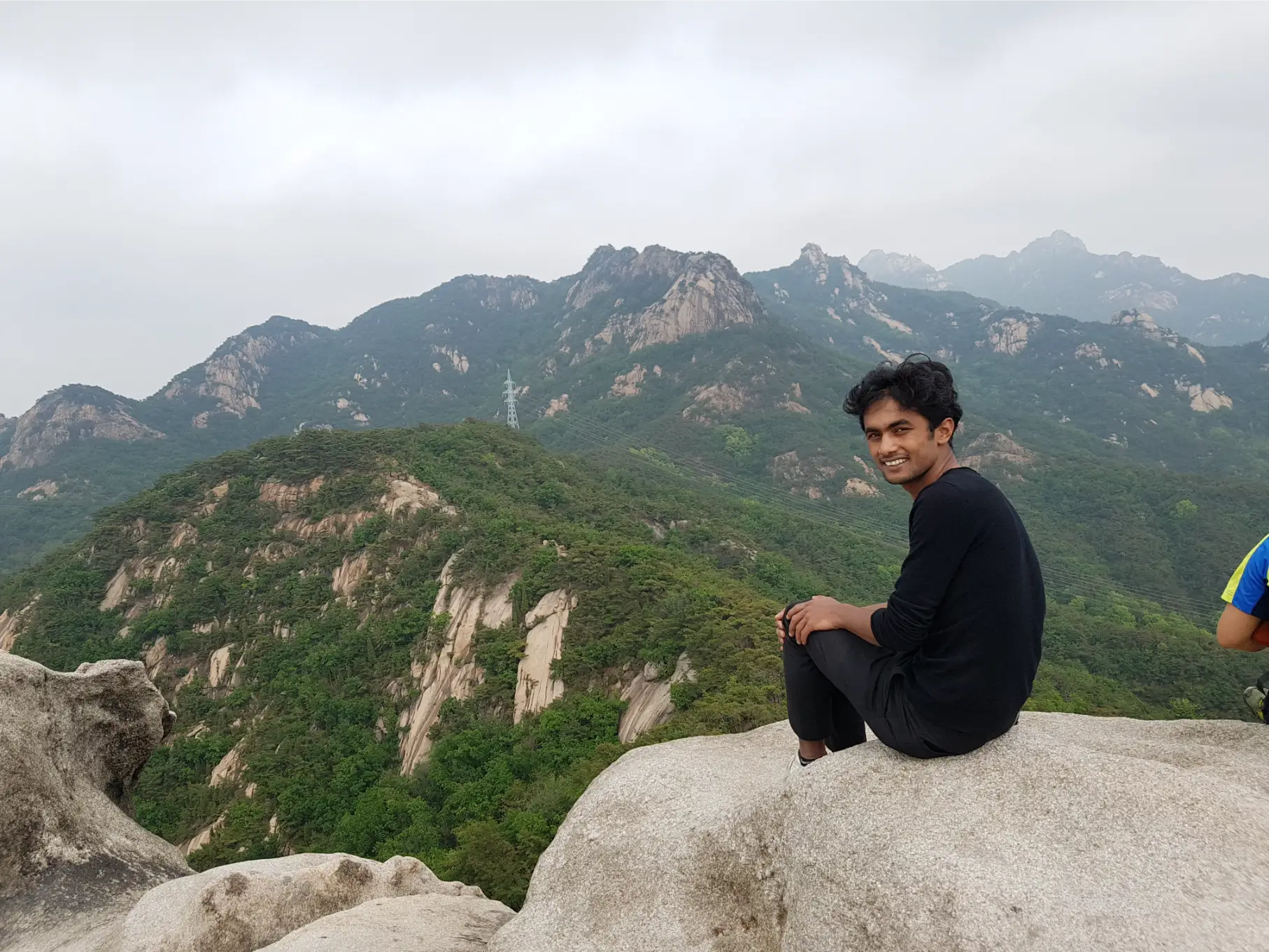
Tips for Hiking in Summer:
- Start your hike early in the morning to avoid peak heat.
- Wear lightweight, moisture-wicking clothing and a wide-brimmed hat.
- Pack plenty of water and electrolytes to stay hydrated.
- Bring a lightweight rain jacket or poncho in case of sudden rain.
- Apply insect repellent to avoid mosquito bites, especially near shaded areas.
Autumn (September to November): Stunning Fall Foliage
Autumn is arguably the best time to hike Baegundae Summit Peak. The mountains are painted in shades of red, orange, and yellow, creating breathtaking scenery. The crisp, cool air and lower humidity make it ideal for hiking, with temperatures ranging from 10°C to 20°C (50°F to 68°F).
What to Expect: Spectacular views of colorful foliage covering the ridges and valleys. Clear skies offering excellent visibility from the summit.
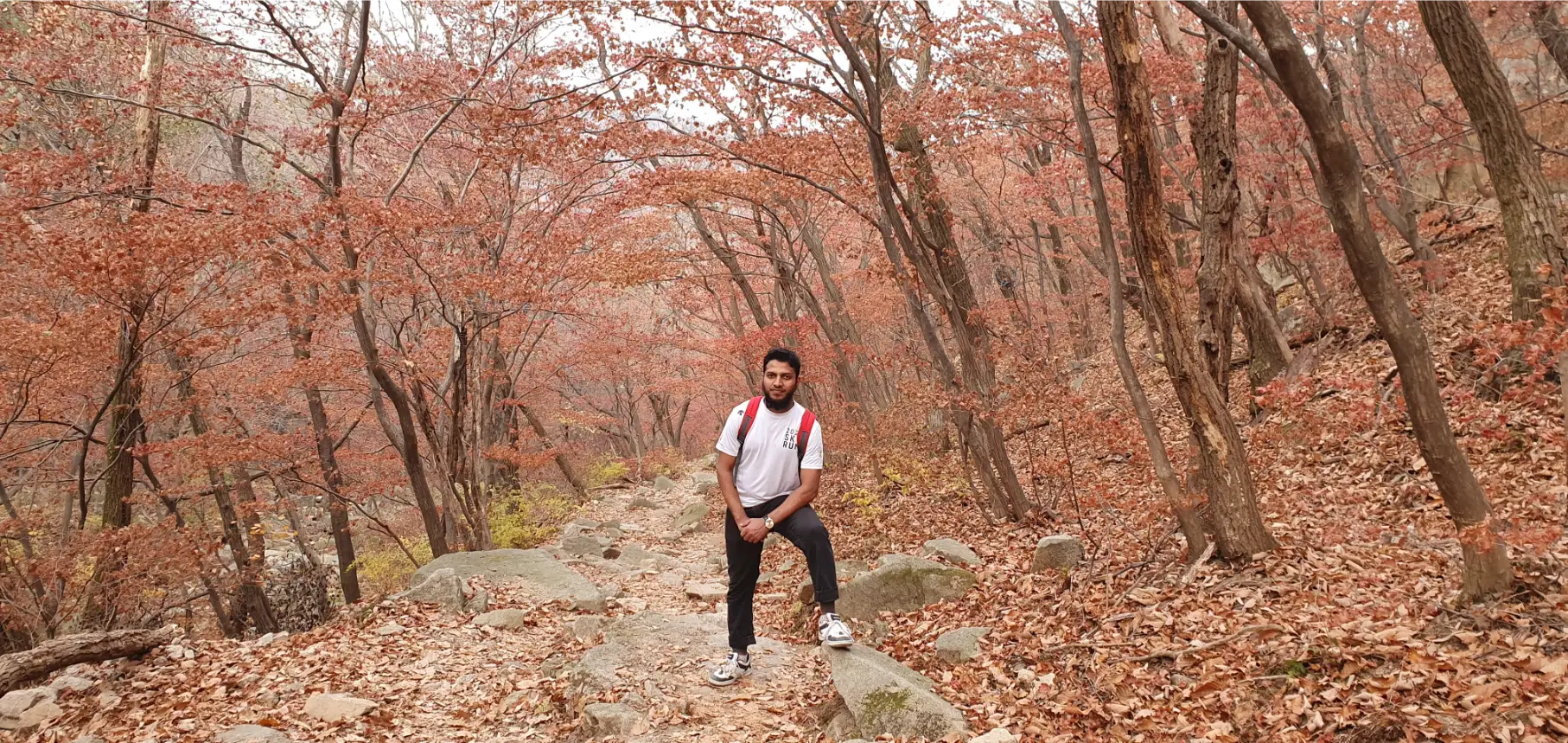
Tips for Hiking in Autumn:
- Dress in layers to stay comfortable as temperatures can vary throughout the day.
- Carry a camera or phone to capture the stunning scenery.
- Weekends can get crowded, so plan your hike on a weekday if possible.
Winter (December to February): A Snowy Wonderland
Winter transforms Bukhansan into a serene, snowy landscape. The trails are quieter, and the granite peaks dusted with snow are truly magical. However, temperatures can drop below freezing, and the trails can become icy, requiring extra preparation.
What to Expect: Icy and snow-covered trails that demand careful footing. Cold temperatures, often between -5°C and 5°C (23°F to 41°F). A peaceful, almost otherworldly atmosphere on the mountain.
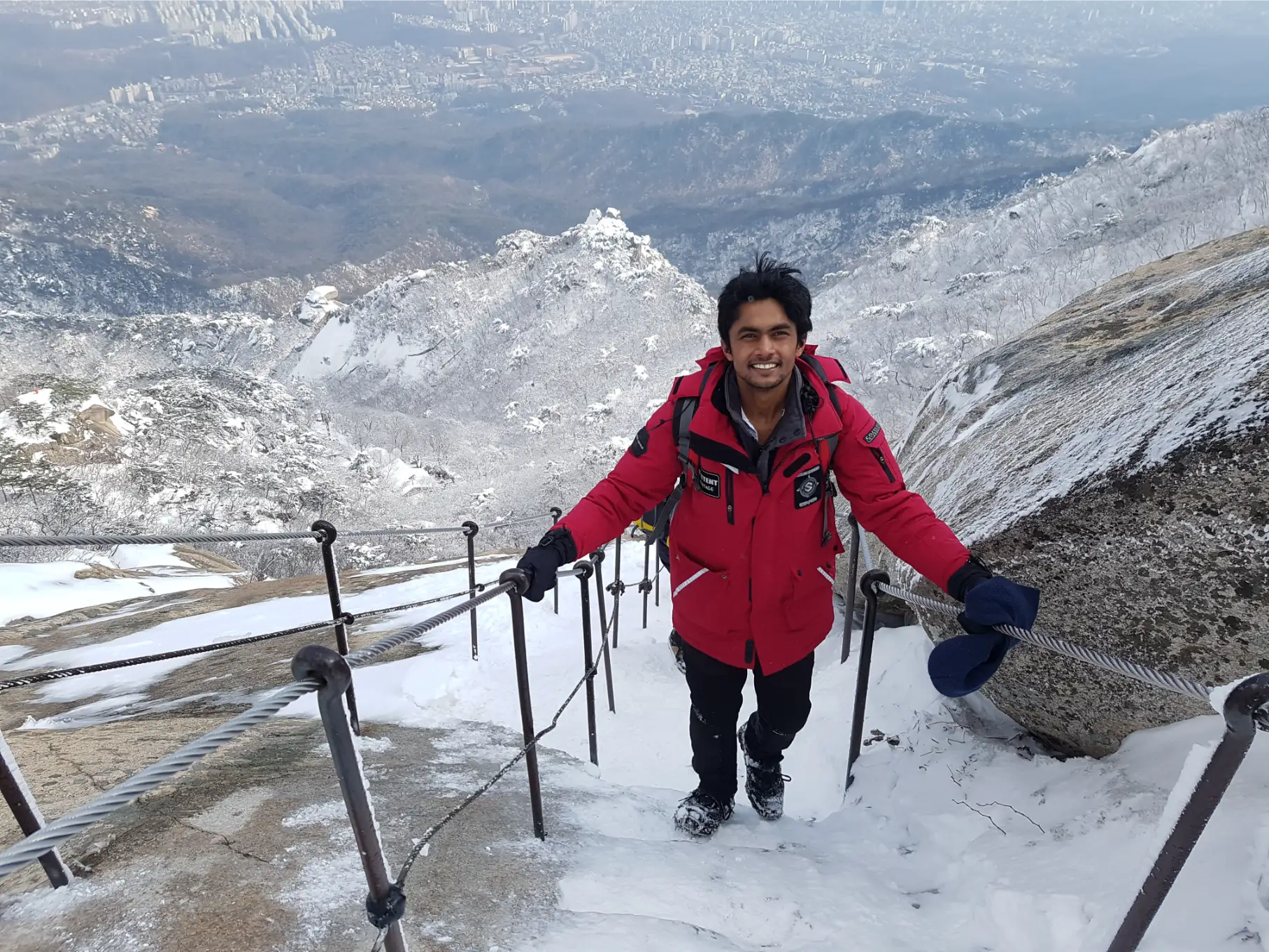
Tips for Hiking in Winter:
- Wear insulated, moisture-wicking layers, including thermal underwear, a fleece jacket, and a waterproof outer layer.
- Bring winter hiking gear, including crampons or microspikes for icy sections, warm gloves, and a beanie or monkey cap.
- Use trekking poles for better balance on slippery terrain.
- Start your hike later in the morning to avoid extremely cold early hours and ensure you descend before dark.
- Pack a thermos with a warm drink to stay cozy during breaks.
My Recommendations For Hiking To Baegundae Summit Peak
Each season offers a unique experience on Baegundae Peak. For first-timers, spring and autumn are the best times to hike due to their pleasant weather and stunning scenery. Summer requires careful planning to avoid heat and rain, while winter rewards prepared hikers with breathtaking snowy views. No matter when you visit, dressing appropriately and being mindful of the conditions will ensure a safe and unforgettable adventure.
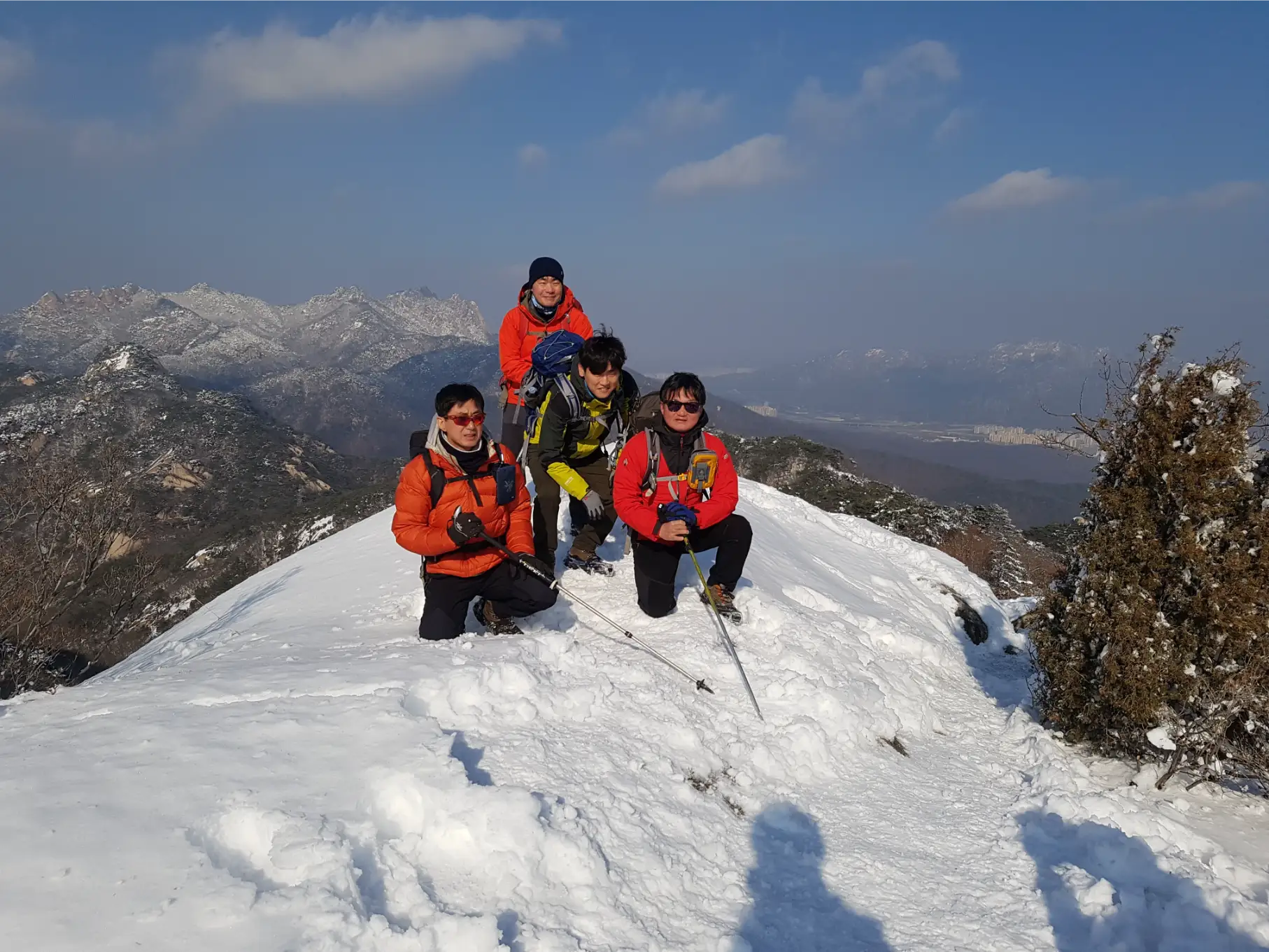
What to Pack for hiking to Baegundae Summit?
Proper preparation is key to enjoying your hike to Baegundae Peak. Here’s a quick checklist to ensure you’re ready:
- Clothing: Wear moisture-wicking layers for comfort. In summer, choose lightweight, breathable fabrics and a hat. In winter, bring insulated layers, gloves, and a hat.
- Backpack: Opt for a small, lightweight pack to carry your essentials without adding extra weight.
- Water and Snacks: Bring at least 1–2 liters of water and energy-boosting snacks like nuts, energy bars, or fruits to keep you energized throughout the hike.
- Safety Gear: Pack a basic first aid kit, sunscreen, insect repellent (for summer), and a fully charged phone for navigation or emergencies.
- Weather Protection: Carry a lightweight rain jacket for unexpected rain and dress in layers to adapt to changing temperatures.
- Trekking Poles (Optional): These are helpful for steep climbs and descents, especially if you’re not accustomed to rugged terrain.
- Crampons: If you’re hiking in winter, crampons are essential. Do not attempt a winter hike without them.
- Footwear: A well-gripped pair of hiking shoes is essential for safety and comfort on any trail.
FAQs About Hiking Baegundae Summit Peak
The hike typically takes 3–5 hours round trip, depending on the trail you choose and your pace. It can take longer if you take breaks or explore other peaks along the way.
No, Baegundae Peak is accessible to most hikers with basic fitness levels. While some sections involve steep climbs and rocky paths, ropes and railings are provided for safety. Beginners can take it slow and still enjoy the hike.
No, there is no entrance fee. Bukhansan National Park is open to the public free of charge.
Wear comfortable, moisture-wicking clothes and sturdy hiking shoes with good grip. In colder months, layer your clothing and bring essentials like gloves and a hat. In summer, opt for breathable fabrics and a wide-brimmed hat.
Yes, there are restrooms at key points along the trails, including near the starting points and some rest stops.
Yes, winter hiking is possible, but it requires extra preparation. Wear insulated layers, use crampons for icy paths, and start late in the morning to avoid the coldest part of the day.
There are small shelters and rest stops where you can buy snacks and drinks. However, it’s a good idea to pack your own lightweight snacks for convenience.
Starting early in the morning, around 7–8 AM, is ideal. It helps you avoid crowds, allows ample time to enjoy the trail, and ensures you descend before it gets dark.
You can hike alone as the trails are well-marked and safe. However, if you’re unfamiliar with the area, consider joining a group or hiking with a friend for extra support.
Yes, several local companies offer guided tours to Baegundae Peak. This is a great option if you want additional information about the park’s history and landmarks.
Bring a lightweight rain jacket or poncho and wear waterproof shoes. Be cautious on slippery rocks and consider turning back if the conditions become unsafe.
